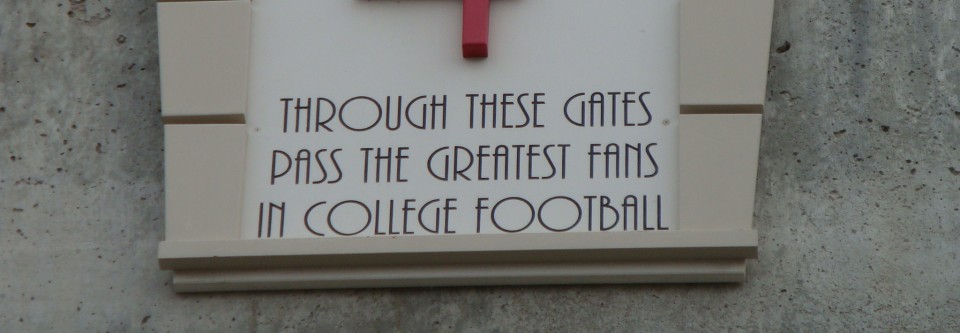Tommy Armstrong, much maligned, some of it well deserved, is currently sitting at 29th in the country in passer efficiency rating and 36th in total yards per game. Perhaps more importantly, he’s only thrown 1 interception through his first three games to 7 TDs. Part of that is weak competition, but I’d argue a larger part of that is Armstrong’s maturation as a quarterback along with offensive coordinator Danny Langsdorf’s growing comfort with how to use him. #4 is never going to be coldly efficient in the passing game, but he’s made much better decisions with the football this year both passing and running it. And for his part, Langsdorf has been able to introduce Tommy’s legs not only in the running game, but also by building passing concepts that take advantage of them as well.
This week we’re going to go a little off the reservation to look at this in action. Instead of breaking down three new plays, we’ll take a look at a single offensive concept and how it unfolds during a game. When OCs talk about being “multiple” or “flexible,” they’re not just talking in a macro sense about being able to both run and throw the ball. Rather in a micro sense they’re also talking about being able to run core offensive concepts across a wide variety of formations and with small tweaks on each play. Another indicator of multiplicity, largely because of the new RPO revolution, is packaging run game concepts with passing game concepts on the same play, and again both of which you can show out of multiple formations. When OCs can get to that level in their play calling, that’s when you start to see offenses really take off. Tom Osborne was one of the best at this multiplicity, calling over 75% of his plays as runs but showing those core running concepts out of a ton of formations and with small deviations in the blocking schemes as well. The end result is hesitant defenses, never sure what they’re going to see after the snap because film study doesn’t reveal too many tendencies.
As we’ll see in this write up, Danny Langsdorf is starting to pick on defenses in the same way. Calm down there, Run the Damn Ball Guy, I’m not saying OCDL is Tom Osborne. I will say though that he’s starting to climb up the chart of legit OCs in college football. This week, let’s take a look at Langsdorf’s flare/swing screen concept and how he uses it to dupe opposing coordinators and their players.
Continue reading “Oregon – Behold, Tommy Armstrong’s Evolution” →









